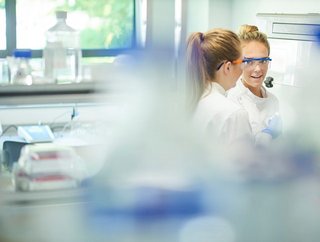Four ways to create a more eco-friendly lab

Climate change is happening and every workplace has a part to play in reducing our total carbon footprint. Individual laboratories and those in schools, universities and other institutions are no different.
Labs are being held accountable more and more on how they manage energy, recycle waste and conduct experiments.
The good news is there a few steps every lab can take to create an eco-friendlier environment, without compromising results. Radleys, a leading provider of scientific glassware, is here to offer some top tips for creating a greener lab.
1. Start with greener experiments
There are lots of ways to conduct greener experiments without compromising your chemistry. Introducing greener chemistry involves reducing the generation of waste, using limited resources less and reducing the use of hazardous chemicals (that can also be hazardous to dispose of too).
Greener experiments happen when you use the right equipment. Using lab control software that automates your experiments and enables better temperature control while removing manual errors can lead to increased yield and decrease wasted product.
You can also limit chemical waste by switching from oil baths to aluminium heating blocks for round bottom flasks, which don’t use oil, which degrades and requires disposal and replacement.
Try swapping hazardous chemicals for greener and safer alternatives that are often cheaper too.
2. Reduce water waste
Water is a widely used and vitally important resource in laboratories – it is also very much taken for granted. But water wastage doesn’t have to be an inevitable result of experiments.
Commonly used water condensers can consume up to 150 litres of water an hour, which can have a huge effect on locations that experience extreme hot weather and drought. Switch to an air condenser like the Findenser, which can replace traditional condensers in most experiments and requires no running water.
In some applications, you could use chillers (such as from Huber) to recirculate cooling water, rather than the water going straight down the drain.
You could also switch from water stills to the latest water purification systems.
3. Common sense chemistry
There are also lots of basic ways to create a greener lab today. Treat your lab like your home – switch off lights and unused equipment when not in use and set your computer to sleep when it’s not in use for at least five minutes.
A better organised fridge or freezer will mean you can find samples quicker and leave the door open less. Discard samples you don’t need; this can help free up space, meaning you will potentially need fewer energy-sucking fridge or freezer units in the future.
Recycling should also be a huge part of your new green lab policy. Dispose of plastic, glass and paper in appropriate bins, select products that have recyclable packaging if you can and recycle consumables such as filters and cartridges where possible.
4. A new eco ethos
Having all your plans ready is great; putting them into action is different. Whatever the size of your lab, everyone must be on board if your new greener lab policies are going to work. You can obviously begin using different equipment for experiments and educate staff and students on their uses. Put together a new green policy either online or printed and ensure everyone understands their responsibilities.
Your new greener, cleaner lab
Reducing energy usage and waste and increasing recycling is an inevitable path for every laboratory. Unfortunately, the average energy usage for a working lab is much higher than the average commercial building. While research and development laboratories are at the forefront of new discovery, they are also near the front of the queue in institutions that must reduce their environmental impact too.
However, as we’ve now seen, there are at least some greener steps every lab can take without compromising on the quality of vital experiments.






